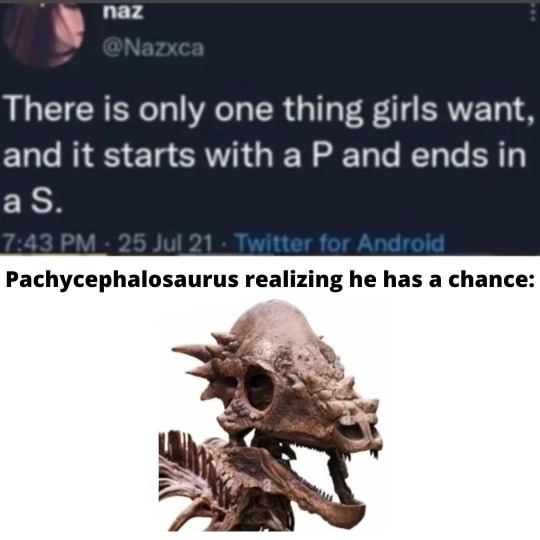Geology, Biology, Paleontology, and the dinosaurs I paint. Plus some other stuff
Last active 2 hours ago
Don't wanna be here? Send us removal request.
Text

Today's the ol' labor dabor
16 notes
·
View notes
Text

Albertaceratops nesmoi and Sinoceratops zhuchengensis
A pair of not quite derived but not quite basal centrosaurs
I didn't get around to drawing a dinosaur last Sunday, so this week y'all get two, and color.
I got tagged in the reblogs of a couple posts last week, a pixel art Albertaceratops, and a herd of Sinoceratops, so they were on my mind so they got painted. Go send the other posts some love!
Thanks to @theenatiornithebandwagon for the shoutouts, both these artists are great, and my dash is better for it!
@tine5's pixel art is beautiful, and their Albertaceratops is no exception. I don't usually reblog other people's art, but the style is immediately recognizable as not mine, and it gave me an opportunity to ramble about basal vs. derived positions in the tags
@yee-qi's Sinoceratops is the (current) newest art piece in their Perspectives series, which I am a fan of. Their description of the art subject and what they based things on reminds me of my own long posts (my Horseshoe Canyon stuff). Also they have a diverse range of styles, and it's cool to see the contrast between the pieces.
#digital art#krita#dinosaurs#albertaceratops#sinoceratops#ceratopsian#paleoart#palaeoart#paleoblr#palaeoblr#paleontology#palaeontology#sunday scribbles#shout outs
35 notes
·
View notes
Text
This land looks like the physical manifestation of brute, inarticulate rage



when u watch a scary movie is it OK to imagine you are the girl getting chased ?
6K notes
·
View notes
Text
I grew up in a pretty rural area, and quite a lot of people around there had a late-'90s/early-2000s Ford Ranger because they were "unkillable." put 300k miles on them and the only parts you'd have to replace were the rear end leaf spring shackles because they'd rusted through. Or a 2001-2002 F-250 Super Duty with the 7.3 diesel. I interact with 2 of them daily, one's north of 400k miles and the other's odometer stopped working at 500k (at least 5 years ago)
There is no vehicle I have ever seen that can compare to the Top Gear Hilux.
I'm in awe
I need one!
cant stop thinking about this video
190K notes
·
View notes
Text

what’s your “odd” comfort movie? a movie that isn’t stereotypically comforting but does comfort YOU? mine’s conclave (2024)
21K notes
·
View notes
Text



everybody give it up for this brand of green. round of applause for most under appreciated green
105K notes
·
View notes
Text
Temperate Lake Dashboard Simulator

🐦⬛2xcrested_cormorant Follow Going to try and eat this weird fish

♻️🐦⬛2xcrested_cormorant Follow wilmdlife hopital

🐸rana-bufo Follow No one can ever truly understand what BULL4rog's music means to me 😭 this song in particular argrgrgrgrgrg the way he puffs out his vocal sack asdfghjk

BULL4rog: listen here on spotify ♻️🐸rana-bufo Follow I think I huave chytrid

🐟ilikeeatingminnowsFollow I just migrated here from finstagram please be nice


🐠powerbottomfeeder Follow
I have HAD IT with this lake, it’s the third day in a row we’ve had nitrates above 8 ppm and uug the algae, my allergies I can’t do this
♻️🐟carpy-diem Follow
Lol we regularly get nitrates up to 20 ppm in my lake ♻️🦞crawdaddy Follow uhhh you shouldn't be bragging about that, it's really unsafe ♻️🐟carpy-diem Follow suck it you little oligotrophic bitch

🐢snappturt Follow Dear Tumblr, am I the Basshole for the way I catch minnows? I was chatting with some of the guys I bask with and they said the way I catch minnows is problematic; What I do is I sit on the bottom of the lake, I hide myself in the mud and I open my mouth. My tongue looks a lot like a little worm so I wiggle it around- and because of that, minnows swim over and check it out. Once they get close enough, then I bite down and eat them. Some of my rockmates have told me that this is manipulative and toxic behavior- but they also eat minnows...I don't know guys...

🦆tree hole-nester-acorn-eater Follow
is it just me, or is this super homoerotic???


🐟bigpikexxl Follow liveblogging diving down to the bottom
♻️🐟bigpikexxl Follow dark
♻️🐟bigpikexxl Follow big log
♻️🐟bigpikexxl Follow rock
♻️🐟bigpikexxl Follow kinda cold
♻️🐟bigpikexxl Follow oh hi @deepwatersculpin!!!

♻️🐠deepwatersculpin Follow oh hey @bigpikexxl!!!

never thought i'd seen one of my mutuals irl!!! I didn't even know we lived in the same lake!!!

🐠Shadlad Follow I'm not sorry, and I'm not afraid to say it, if you're an introduced species, go dry yourself out. You're not welcome to eat up all of our resources and live in my ancestral longs and rock crags. These things are for us to relate to and not for you to squander.
♻️🦞crevice-steve Follow
Can't believe this type of fishcourse is still popular on this site, introduced species didn't choose to be introduced and have as much of a right to live as anyone else. Bigotry against introduced species is still bigotry and that's a hill I will dry on. ♻️🐠Shadlad Follow Go ahead, dry yourself out then ;) ♻️🪷nootnootnewt Follow Hey man, I hate invasive species as much as anyone else but please stop telling people to beach themselves for political reasons- yeah that includes inavsives too ♻️🦐typical_scud Follow Did you legit just use the word Invas*ve to describe introduced species? ♻️🦢flatfootswimmer Follow anyone in this thread eat pondweed?

♻️🐟largemouthbASS Follow A colab with my mutual @2xcrested_cormorant after they got released from the wildlife hospital. They haven't been on much since the Fish and Wildlife Service released them in the wrong lake and it took them a while to get back to their colony. We hope this guide will help you avoid accidentally eating/engaging with bait!


26K notes
·
View notes
Video

This is the /an/ post that keeps on giving.
399K notes
·
View notes
Text

Albertaceratops portrait
#a centrosaur!#a derived centrosaur?#maybe#I guess it depends on how you define 'derived' in a phylogenetic sense#like#eucentrosaura is pretty safe to say is all derived centrosaurs#and nasutoceratopsini is pretty safe to call basal centrosaurs#but albertaceratopsini is between the two#so#i guess they could be if you want them to be#or not#however you wanna divide your centrosaurs#i'll go ahead and call it#a derived centrosaur!
50 notes
·
View notes
Text

De-Na-Zin wilderness (aka Bisti Badlands) formation in New Mexico, USA
photo credit: Jessica Fridrich
362 notes
·
View notes
Text

this terrible distant blurry shot of two pigeons is one of my favourite photos out of any pic I’ve ever taken I think
35K notes
·
View notes
Note
why bother caring about the environment when 1. It’s so obviously a lost cause and 2. There’s definitely going to be a nuclear war?
And what are you doing about it Anon? Learn about ecological restoration or get out of my way.
55K notes
·
View notes
Text

Gettyia gloriae
This Sunday's doodle was an exercise in birds! Gettyia is part of a clade of Enantiornithes called the Avisauridae which appear to have raptorial adaptations, being the late Cretaceous equivalent of hawks. Compared to its relatives Avisaurus and Mirarce, Gettyia is much smaller, and less well represented, being known only from a right tarsometatarsus. But the tubercle for the attachment of the tibialis cranialis muscle is much further distal than in other enantiornithes and slightly moreso than it's larger relatives. This is an adaptation for exerting grip pressure when carrying prey (as modeled for Avisaurus). I imagine this little guy being more like a kestrel or small owl, where its relatives were more eagle-like.
#digital art#art#krita#dinosaurs#birds#gettyia#gettyia gloriae#sunday scribbles#paleontology#palaeontology#paleoart#palaeoart#paleoblr#palaeoblr#enantiornithes#avisauridae#two medicine formation#cretaceous
60 notes
·
View notes
Text
And then there's B. rex

The existence of the T. Rex implies the existence of E. Rex.
90 notes
·
View notes


